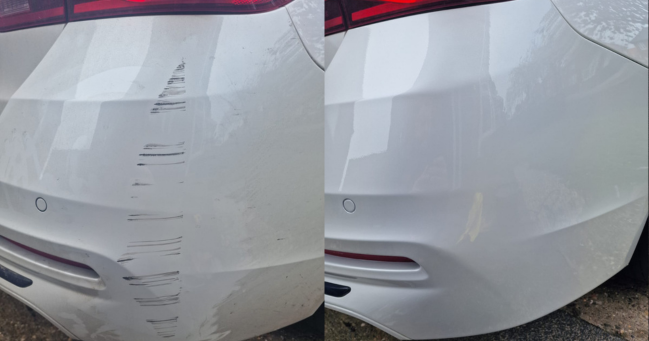
- March 4, 2025
T-Cut: The Definitive Guide to Car Paint Restoration and Maintenance
Introduction
In the world of automotive care, few products are as iconic in the United Kingdom as T-Cut. This legendary cutting compound has been a trusted companion for car enthusiasts, weekend warriors, and professional detailers alike for decades. Whether you’re looking to breathe new life into an ageing paintwork or tackle those pesky surface imperfections, T-Cut has been the go-to solution for British car owners.
Table of Contents
- Understanding T-Cut: A Deep Dive
- The Science Behind T-Cut
- Comprehensive Uses and Applications
- Detailed Application Guide
- Pros and Cons of T-Cut
- Advanced Techniques and Tips
- Frequently Asked Questions
- Alternatives and Complementary Products
1. Understanding T-Cut: A Deep Dive
Historical Context
T-Cut was first introduced in the United Kingdom during the mid-20th century, quickly becoming a staple in garages and car care kits across the nation. Originally developed as a solution for minor paint imperfections, the product has undergone numerous refinements over the decades.
Product Range
Today, T-Cut offers a diverse range of products tailored to different paint types and specific needs:
- T-Cut Colour Restore (for coloured vehicles)
- T-Cut Metallic (specifically formulated for metallic paint finishes)
- T-Cut Original (the classic formulation)
- T-Cut Ceramic (for modern ceramic-coated vehicles)
2. The Science Behind T-Cut
Composition and Mechanism
T-Cut is essentially a mild abrasive compound designed to:
- Remove an extremely thin layer of clear coat
- Smooth out surface imperfections
- Restore paint’s original lustre
- Eliminate minor oxidation and surface contaminants
The product contains fine abrasive particles suspended in a specialised solvent base, allowing for controlled and minimal paint removal.
Chemical Breakdown
Typical T-Cut formulations include:
- Mild abrasive compounds
- Solvent carriers
- Cleaning agents
- Protective polymers
- Colour-matching pigments (in specialised variants)
3. Comprehensive Uses and Applications
Primary Uses
- Surface Scratch Removal: Effectively tackles light surface scratches
- Paint Restoration: Revives faded and oxidised paintwork
- Preparation for Further Treatment: Creates an ideal surface for waxing and polishing
Advanced Applications
- Blending Panel Repairs: Professional techniques for seamless paint integration
- Minor Headlight Restoration: Temporary solution for clouded headlight surfaces
- Spot Treatment for Paint Imperfections
Specific Vehicle Applications
- Classic Cars: Restoring vintage paintwork
- Modern Vehicles: Maintaining showroom-like finish
- Daily Drivers: Quick touch-up solutions
4. Detailed Application Guide
Preparation Stage
- Vehicle Preparation
- Thoroughly wash the vehicle
- Ensure the surface is completely dry
- Work in a shaded, cool environment
- Use clean, lint-free microfibre cloths
- Tools Required
- Microfibre cloths
- Clean, soft buffing cloths
- Protective gloves
- Working surface (preferably indoors or in shade)
Step-by-Step Application Process
- Initial Application
- Apply a small amount of T-Cut to a microfibre cloth
- Use gentle, circular motions
- Work in small, manageable sections
- Apply minimal pressure
- Buffing Technique
- Use a clean, dry microfibre cloth
- Buff in circular motions
- Remove all residue
- Inspect under natural light
- Post-Treatment
- Apply car wax to seal and protect
- Allow adequate drying time
5. Pros and Cons of T-Cut
Advantages
- Cost-effective solution
- Easy to use
- Widely available
- Suitable for multiple paint types
- Quick results
Limitations
- Not suitable for deep scratches
- Potential clear coat thinning with excessive use
- Requires careful application
- Not recommended for plastic surfaces
6. Advanced Techniques and Tips
Professional Recommendations
- Always test on a small, inconspicuous area first
- Use the correct formulation for your vehicle’s paint type
- Limit usage to 1-2 times per year
- Follow up with quality car wax
- Consider professional detailing for significant imperfections
Common Mistakes to Avoid
- Applying too much pressure
- Using on deep scratches
- Neglecting to clean surface thoroughly
- Exposing treated surface to direct sunlight immediately after application
7. Frequently Asked Questions
Technical Queries
- Can T-Cut damage my car’s paint? When used correctly, T-Cut is designed to be safe. However, improper application can potentially harm the paintwork.
- How often should I use T-Cut? Recommended maximum of 1-2 times annually, depending on vehicle condition and usage.
- Is T-Cut suitable for all paint types? Different formulations exist for various paint types. Always select the appropriate variant.
8. Alternatives andComplementary Products
Complementary Products
- Professional-grade cutting compounds
- High-quality car waxes
- Ceramic coating protectants
- Advanced polishing systems
Alternative Brands
- Autoglym Renovator
- 3M Scratch Remover
- Meguiar’s Scratch Removal System
Conclusion
T-Cut remains a quintessential British car care product, offering an accessible solution for minor paint imperfections. By understanding its proper application and limitations, car owners can maintain their vehicle’s aesthetic appeal effectively and economically.
Disclaimer: Always follow manufacturer instructions and consider professional advice for significant paintwork issues.


